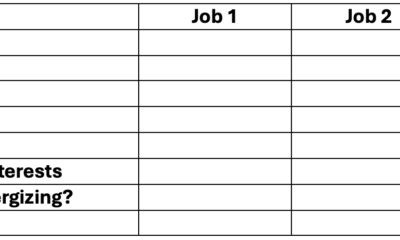Professional Development
The kind of leadership companies demand in times of uncertainty

Adapting and Thriving in Uncertain Times: A Guide for Business Leaders
After every crisis, some of the uncertainty becomes part of our new reality. So how can you adapt and thrive when change is not a choice, but inevitable? Let’s see.
Can you believe Netflix is over twenty years old?
The company has responded to change (dot-com crash, global financial crisis, COVID-19) in a way that seemed to belong to that time in each period, and sometimes even before that time. This once DVD-by-mail-only company started building a streaming service in the early 2000s, when most homes didn’t even have internet with sufficient bandwidth. Anticipating a shift in technology, we sensed long in advance how media consumption would change. The results? It has grown from 10 million subscribers in 2010 to more than 160 million in 2020.
We are good at finding solutions for today, but when it comes to the future, it is human nature to see things in a state of positive sustainability. Instinctively, we tend to underestimate the likelihood of negative events. And this means that we are not very good at preparing for uncertainty, let alone managing it.
Successful companies prepare for the unknown and use uncertain times as an opportunity to rethink their work standards. The fallout from COVID-19 has reminded business leaders that constant reexamination of current practices and assumptions is paramount.
Here’s a guide to help business strategists act in times of uncertainty – and use the times to increase their adaptability and position themselves for success.
Resilience: An Antidote to Business Uncertainty
Uncertainty brings outcomes we never predicted or saw coming – whether it’s a fire breaking out, a pipe bursting, or a global pandemic. The problem is compounded by being left in the dark and not knowing how long the setback will last, as with the coronavirus pandemic, with businesses still wondering about the shape and scale of the economic recovery, and its long-term consequences for business models and consumer behavior. After all, what do you hold on to when you make plans in uncertainty?
Resilience can become a valuable attribute of companies in such times.
It is not possible for anyone to be fully prepared for the unknown. But resilient organizations learn to expect the unexpected. It helps them recover faster than others and take advantage of the many opportunities that arise as pioneers.
Resilience is not resistance to change, but a person’s ability to embrace change. And be ready. It is reflected in how you respond to the uncertainty; how quickly you bounce back; and what health will you be in afterwards? Instead of trying to preserve what worked in the past, resilient leaders overcome their fears, brainstorm new ideas and embrace large-scale disruption.
In short, resilience is a sign of an organization’s ability to come back stronger than ever after being knocked down by uncertainty.
But how do you do that? How do you ensure that adverse situations bend you and don’t break you?
Resilience begins where new perspective and experience meet. It is cumulated in the way you look at change.
Finding a way to rise from the ashes requires rewiring your thinking for resilience and reorganization. We propose three steps to achieve this.
Make peace with the uncertainty first. Understand what has changed, what led to it, and the need to get your business back on its feet, rather than remaining defeated and defeated. Then change your perspective. Confuse your question of why this is happening with what it is trying to teach me. Finally, make changes in your present and prepare to better handle the setbacks in the future. Focus on growth with new strategies.
Leaders must understand the value of each step in developing organizational resilience. Those who simply bounce back and survive may fall into the same trap again the next time they face adversity.
Ten Wise Pieces of Advice for Responding to the Uncertainty Surrounding COVID-19
When the facts on the ground are incomplete and in flux, you need to experiment to establish an operational business. Develop a culture that responds to uncertainty by quickly hypothesizing, testing, learning from new research, and adapting to the models that work. Here are a few actions global business leaders can take during this pandemic to overcome the uncertainty blues and become resilient and agile.
-
Work with a sense of personal security. Good leadership is always about emotional connection. During this pandemic, ensuring that everyone in your organization is safe and healthy is a primary responsibility.
-
Achieve a level of business continuity. Being functional, keeping your head above water and persevering is crucial in any uncertainty. Find a way to keep going. Use virtual media and collaboration tools. Then focus on optimizing continuity.
-
Show signs of life. Let your clients and customers know that you are good and available.
-
Be less promotional and more reassuring in your messages. You can take a direct marketing approach or you can be more sensitive by using a ‘hope all is well’ campaign and the like. Instead of a sales pitch, most global leaders choose to connect by asking about customers’ well-being and informing them of their availability so they don’t need their product or services.
-
Go multichannel and focus on customer focus. Make a zero-tolerance statement within your organization regarding any internal silos against customer focus. Make sure your employees understand that customers have the highest priority during these times. Moreover, do not limit yourself to one channel for communication and business operations. Experiment to find one or more channels that best suit your needs.
-
Stay away from the herd mentality. What works for one company may not work for you. Find your new normal as you adapt every day. Ruthlessly examine your weaknesses and vulnerabilities to become stronger in the long run. Destroy archaic practices to rebuild them.
-
Keep a cool head. It’s not unusual for falling numbers to get on your nerves. Don’t panic in these situations. It’s unnecessary. Take a step back and see what you’re left with. Gratitude for what you have can open up a new world of possibilities. Look at the long term for more motivation.
-
Organize for quick decision making. Uncertainty overwhelms someone. If you are not prepared, a crisis will overwhelm you. Distribute leadership responsibilities within your organization so that your employees are motivated and able to make decisions and work quickly. A big part of this change is giving yourself (as an organization) permission to be wrong when things go wrong.
-
Make your offer relevant to today. Use the uncertainty to gauge where customer tendencies lie or might change in the future. Leverage new media and products/services of your choice to redesign and innovate your offering.
-
Collaboration is key to building resilience. Startups are seen as a threat by incumbents, and vice versa. However, a variety of collaborations between startups and established companies can help each party survive, adapt and thrive. The right partnership would make it easy for both to raise capital, reduce costs and position themselves for growth. Forge joint ventures or project-based relationships to deliver disruptive value propositions.
To Sum Up
What type of leadership requires uncertainty? The answer lies in resilience and agility. Getting through tough times is about seizing opportunities and not reacting to the turbulence around you. Lead by preparing your teams and organization to re-create the future with you. Adopt a new perspective to create a new normal, formulate a new vision and incorporate new practices.
Business strategists who successfully lead their organizations through uncertainty not only survive, but also protect them from future disruptions by increasing their adaptability.
-

 Professional Development1 month ago
Professional Development1 month agoDrawing up your strategy
-

 Personal Growth2 months ago
Personal Growth2 months agoSucceeding as a ‘parentpreneur’: Top tips
-

 Videos2 months ago
Videos2 months agoGreat Leaders INSPIRE Others To Do Great Things
-

 Productivity1 month ago
Productivity1 month agoHow to Increase Remote Work Productivity
-

 Productivity2 months ago
Productivity2 months agoTips for Boosting Work Productivity
-

 Productivity2 months ago
Productivity2 months ago5 Ways to Increase Your Personal Assistant’s Productivity
-

 Leadership1 month ago
Leadership1 month agoHow to Tackle Big Challenges
-
Leadership1 month ago
Cutting Through the Clutter of Internal Communications































